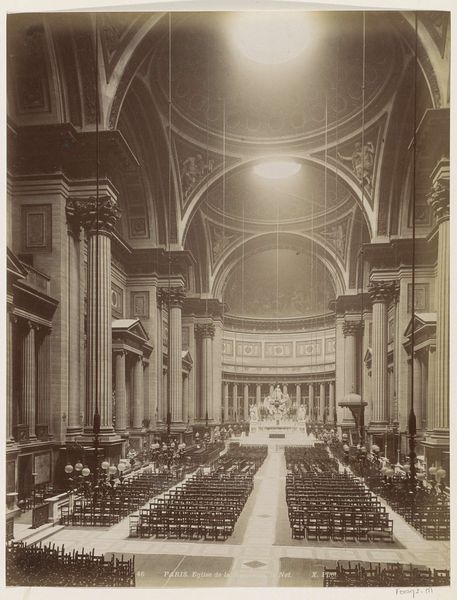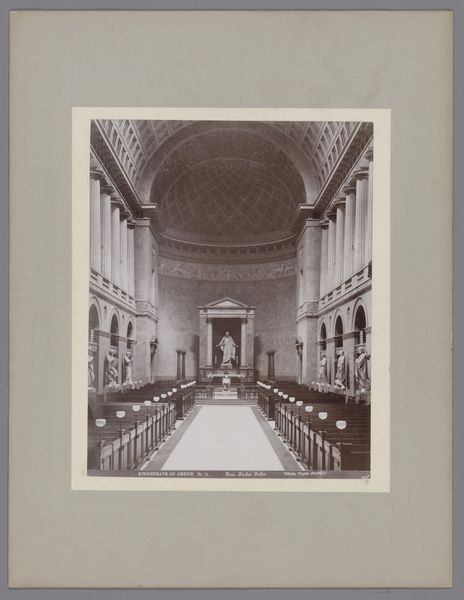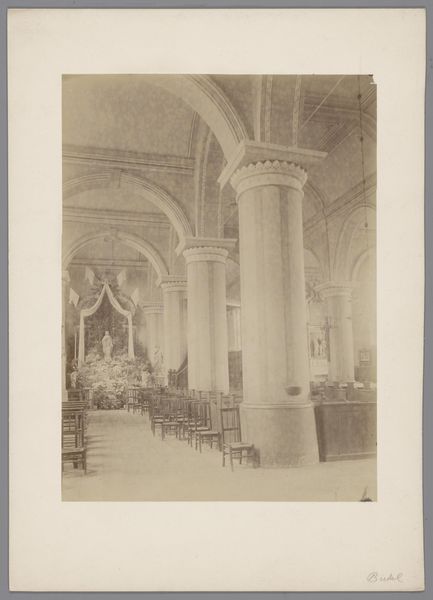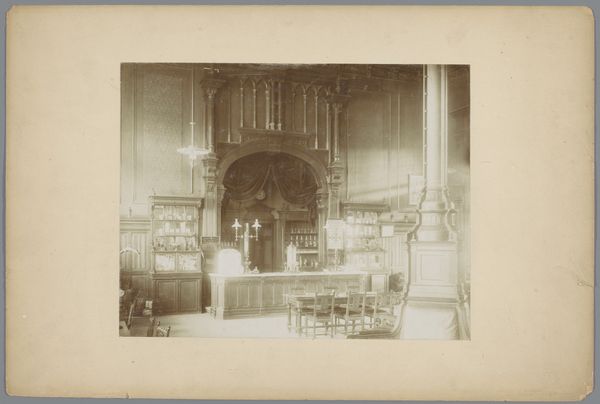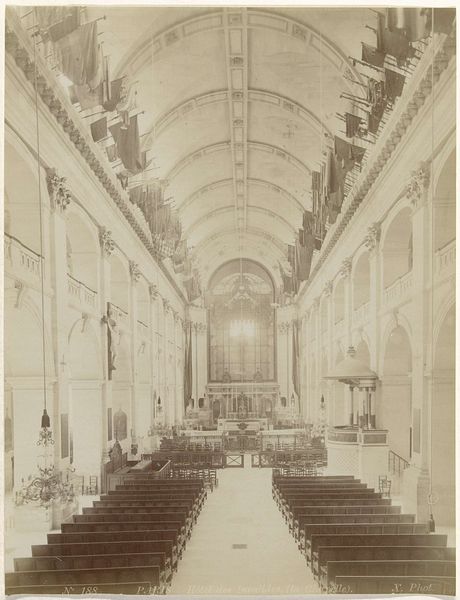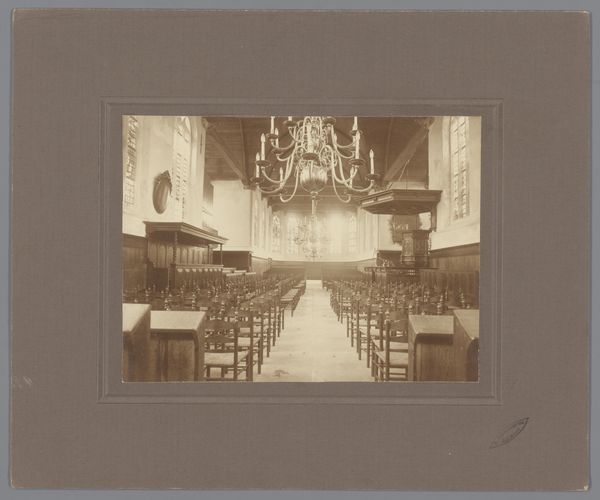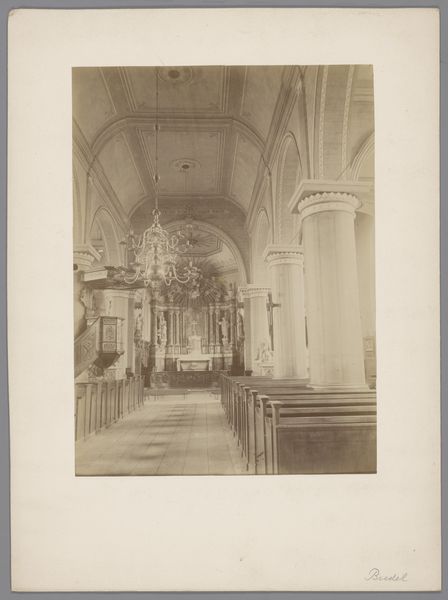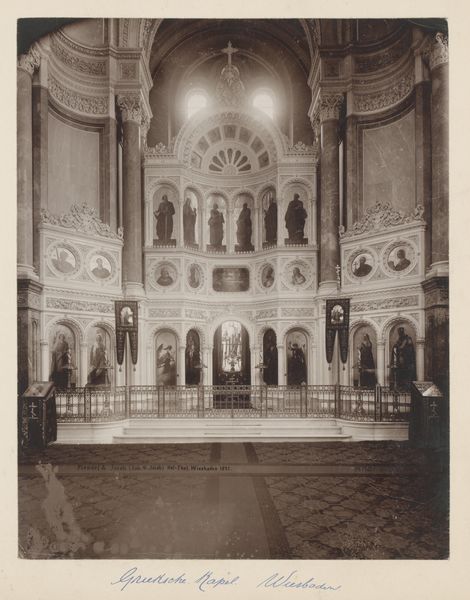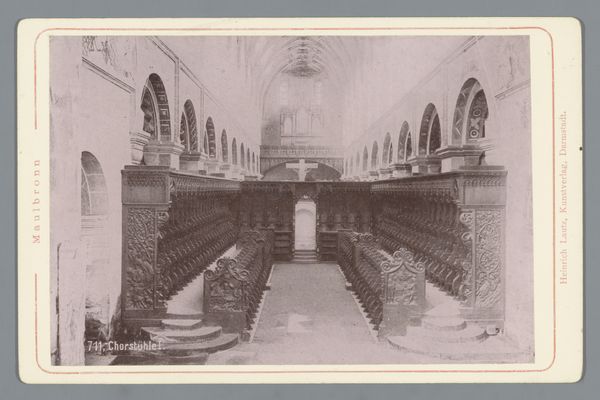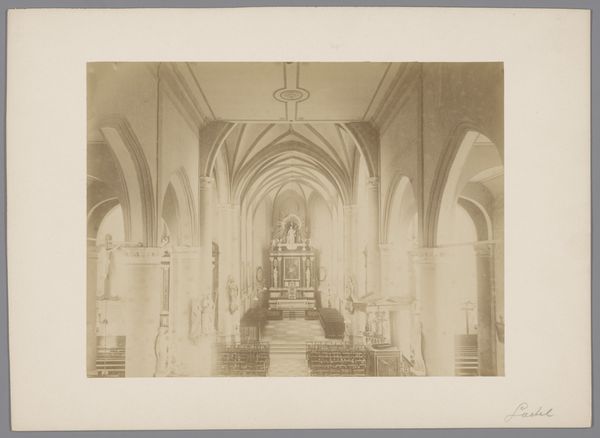
Dimensions: height 264 mm, width 214 mm, height 410 mm, width 304 mm
Copyright: Rijks Museum: Open Domain
This photograph of the interior of La Madeleine in Paris was made by an anonymous photographer, using the 19th-century technique of albumen print. This process involved coating paper with albumen, found in egg whites, and then using it as a surface for light-sensitive silver salts. The resulting sepia-toned image has a distinctive, soft quality, and a wide tonal range. The final print is mounted onto card stock. The albumen process itself has social significance. Photography was a booming industry at the time, and studios would have employed many workers to prepare the prints, which would then have been sold as souvenirs to tourists. This points to the democratization of image-making at the time, and the rise of a consumer culture that created a demand for mass-produced images. The amount of work involved in the production process, from preparing the albumen paper to mounting the final print, speaks to the labor and skill required to produce these images. The photograph presents a snapshot of a particular moment in time, and also provides a window into the social and economic forces that shaped the production and consumption of images in the 19th century.
Comments
No comments
Be the first to comment and join the conversation on the ultimate creative platform.
